TEMPUR-Pedic Cloud Mattress Reviews: The Cloud Series Explained
If you’ve ever been mattress shopping you’ve been exposed to, and most likely tried out, a TEMPUR-Pedic mattress. A driving force of the memory foam industry, TEMPUR-Pedic has continually introduced innovative sleep technologies- and in 2009 provided consumers with the TEMPUR-Cloud series to meet the rising demands of customers clamoring for a softer sleeping surface.
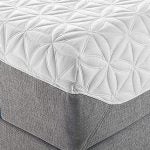
1. TEMPUR-Pedic Cloud Prima – Editor's Choice
- Softness: medium-soft
- Sizes: twin long, queen, king, split king, CA king, and split CA king sizes
- Cooling: no
- Thickness of Comfort Layer: 1.2”
- Density of Comfort Layer: 4.1lb/cu.ft.
- Mattress Thickness: 10”
- Warranty: 10 Year Limited
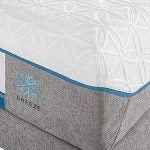
2. Supreme Breeze TEMPUR-Pedic Cloud
- Softness: Soft
- Sizes: twin long, queen, king, split king, CA king, and split CA king sizes
- Cooling: yes
- Thickness of Comfort Layer: 2”
- Density of Comfort Layer: 4.1lb/cu.ft.
- Mattress Thickness:11.5”
- Warranty: 10 Year Limited
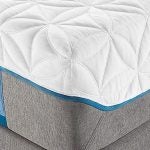
3. TEMPUR-Pedic Cloud Elite
- Softness: Extra-Soft
- Sizes: twin long, queen, king, split king, CA king, and split CA king sizes
- Cooling: no
- Thickness of Comfort Layer: 2.4”
- Density of Comfort Layer: 4.1lb/cu.ft.
- Mattress Thickness: 12.5”
- Warranty: 10 Year Limited
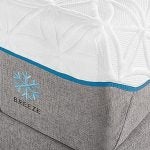
4. TEMPUR-Pedic Cloud Luxe Breeze
- Softness: Softest
- Sizes: twin long, queen, king, split king, CA king, and split CA king sizes
- Cooling: yes
- Thickness of Comfort Layer: 2.75”
- Density of Comfort Layer: 4.1lb/cu.ft.
- Mattress Thickness: 13.5”
- Warranty: 10 Year Limited
TEMPUR-Pedic Cloud Mattress Reviews: The Cloud Series
1. TEMPUR-Pedic Cloud Prima – Editor's Choice
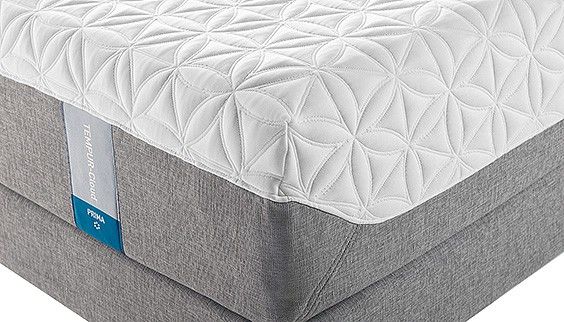
Highlights
- Softness: medium-soft
- Sizes: twin long, queen, king, split king, CA king, and split CA king sizes
- Cooling: no
- Thickness of Comfort Layer: 1.2”
- Density of Comfort Layer: 4.1lb/cu.ft.
- Mattress Thickness: 10”
- Warranty: 10 Year Limited
Pros
- Comes with a mattress cover
- Preference of combo sleepers
- Movement stability from one side to the next
- 90 day sleep trial
Cons
- 2 or more times the cost of other comparable brands
- Slight chemical smell upon opening
- Too soft for back and stomach sleepers
- Heavier weights may not be comfortable
This is the most firm of the Cloud Series and is considered a medium-soft surface. The Cloud Prima is more of preference for combination sleeps due to the added support, and less of a comfort layer- which is only 1.2 inches thick- making it a bit more firm than the other options. This layer is made of the extra soft TEMPUR-ES foam, and is supported beneath by 2 inches of the TEMPER foam. They have a density of 4.1 and 5.3 lb/cu.ft respectively, and provide the soft sink, with less of the memory foam “hug” that some of the softer versions have in order to provide extra support.
Two bottom layers, totaling 7 inches, round out the rest of the mattress to help support body weight and disperse body heat. These are a general polyurethane foam and weight 2.0lb/cu.ft.
TEMPUR-Pedic mattresses do have a large amount of heat complaints associated with them, especially concerning the softer mattresses due to the more enveloping effect that takes place with the softer foams. The Prima does seem to be a hotter mattress for anyone prone to sleeping hot and so may not be the best choice for heavier body types, or anyone who who naturally feels warm at night.
This is a decent choice mattress for combination sleepers, or anyone who prefers a softer surface. It has also been praised as a comfortable choice for anyone suffering from joint pain and arthritis due to how well it reduced pressure points.
2. Supreme Breeze TEMPUR-Pedic Cloud
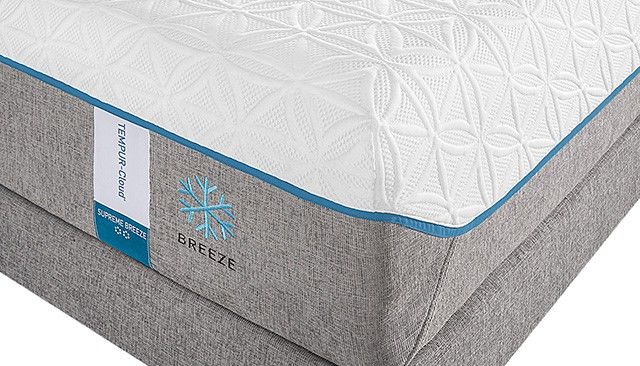
Highlights
- Softness: Soft
- Sizes: twin long, queen, king, split king, CA king, and split CA king sizes
- Cooling: yes
- Thickness of Comfort Layer: 2”
- Density of Comfort Layer: 4.1lb/cu.ft.
- Mattress Thickness:11.5”
- Warranty: 10 Year Limited
Pros
- 10 year warranty
- Low motion transfer
- For combination sleepers
- Soft, yet supportive
Cons
- No 90 day night trail available (on older version- still being sold)
- High comparative cost
- Off-gassing may be noticeable
Recently updated as of March 2017 on the TEMPUR-Pedic website, this is the softest of the Cloud Series, and actually comes in two different versions: the Supreme and Supreme Breeze. The Supreme Breeze has all the same components of the Supreme, plus the added addition of TEMPUR’s specialized cooling system. This innovative technology includes PureCool infused TEMPUR-ES foam within the first 2 inch layer to help draw heat away from the body and diffuse it throughout the foam layers to keep you sleeping cool.
The 11.5” thick mattress is made up of 4 separate layers. The top layer is a 2 inch viscoelastic foam made out of the TEMPUR-ES, or extra soft, foam and weighs in at 4.1lb/cu.ft to help envelope you in the famous memory foam experience. The next layer is 2 inch TEMPUR foam that weighs approximately 5.3 lb.cu.ft and is what helps disperse weight to reduce pressure points, but also allows the softest sleep top possible.
The bottom two layers are a general polyurethane foam at 4 and 3.5 inches respectively. These help transition weight and pressure through the mattress, and also provide the base and support for the above layers.
This is a good choice to get that “sleeping on a cloud” feel as the layers of softness can truly make you feel weightless. The new cooling materials do seem to be popular in initial reports as the newest technological addition to the Breeze line.
3. TEMPUR-Pedic Cloud Elite
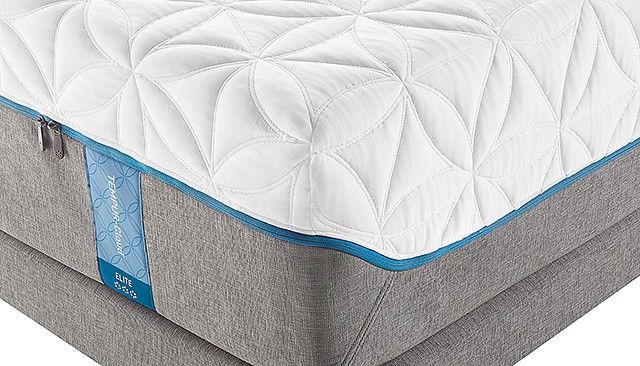
Highlights
- Softness: Extra-Soft
- Sizes: twin long, queen, king, split king, CA king, and split CA king sizes
- Cooling: no
- Thickness of Comfort Layer: 2.4”
- Density of Comfort Layer: 4.1lb/cu.ft.
- Mattress Thickness: 12.5”
- Warranty: 10 Year Limited
Pros
- Good for lightweight side-sleepers
- Proper ‘sinking in’ memory foam feel
- Excellent pressure relief
- 10 year warranty
Cons
- Not for side or back sleepers
- Heavier weights sink in too much
- Pressure relief is a priority, not overall support
- Off-gassing smell
- Heat issues
A thicker, 2.4 inch comfort layer creates the extra-soft layer the Cloud Elite is known for. This particular mattress focuses on pressure point relief and less on overall support. Its four layers help cushion and surround your body starting with the mentioned 2.4 TEMPUR-ES layer which is supported by an additional 2.4 inches of 5.3lb/cu.ft. foam that helps transfer weight into the lower base layers. The bottom two poly foam layers help with increased airflow and provide the mattress structure and overall support.
Despite the increase of soft materials, the Cloud Elite is still not the softest in the Cloud series, although it does provide the side spinal support and reduction of pressure points so often needed by side sleepers.
Because it falls between two softness levels that offer Breeze options as well as Cloud options, this isn’t as highly regarded by consumers simply due to it not being a top seller. But it is a decent option for anyone looking for a soft option in which heat retention is not a bother, and who loves the sinkable feel of soft memory foam.
4. TEMPUR-Pedic Cloud Luxe Breeze
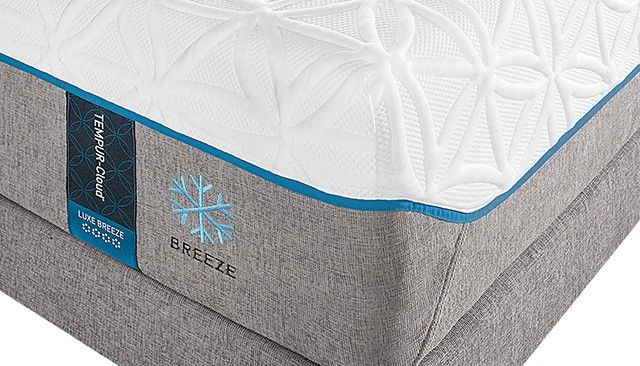
Highlights
- Softness: Softest
- Sizes: twin long, queen, king, split king, CA king, and split CA king sizes
- Cooling: yes
- Thickness of Comfort Layer: 2.75”
- Density of Comfort Layer: 4.1lb/cu.ft.
- Mattress Thickness: 13.5”
- Warranty: 10 Year Limited
Pros
- 10 year warranty
- Cooling system does seem to work
- Good for side sleepers
- Minimal motion transfer
Cons
- Pricy option just to sleep cool
- May be too soft
- Not for stomach or back sleepers
- Takes a 2-3 week ‘break-in’ period
Rounding out the Cloud Series is the Cloud Luxe Breeze, also offered without the innovative cooling materials used in the Breeze line of mattresses. The Breeze version has all the details of the Cloud Luxe, plus the additional technology that allows increased airflow and breathability so often needed in softer mattresses.
As the softest in the line, the Cloud Luxe Breeze has a thick, 2.75 inch TEMPER-ES layer that is integrated with the patented PureCool construction- and weighs in at 4.1lb/cu.ft. Beneath, a supportive 2 inch TEMPER-HD foam (at 7.1lb/cu.ft) distributes both body weight and heat to provide a cooler night’s rest. The remaining layers help transition weight and heat, and serve as the base for the rest of the mattress.
This is an excellent choice for anyone wanting what may be the softest sleeping surfaces currently on the market that also manages to provide a cooling effect. Many complaints surround the memory foam industry in general concerning heat retention, and for the most part initial reviews of the new Breeze Series have been positive concerning a cooler sleep.
Why TEMPUR-Pedic?

Even if you’ve never bought a mattress it’s been impossible to miss the rise of memory foam as a popular material to get a good night’s rest. The phrase “like sleeping on a cloud” was coined by The TEMPUR-Pedic company after their introduction of foam products to the bedding industry in the early 1990’s- changing the way consumers approached their sleep health.
TEMPUR’s patented proprietary foam claims to adapt to your unique body temperature, shape, and weight for a personalized night’s sleep. Pressure points are also drastically reduced through the use of foam, all while reducing motion transfer, to give you an uninterrupted rest.
TEMPUR Foam
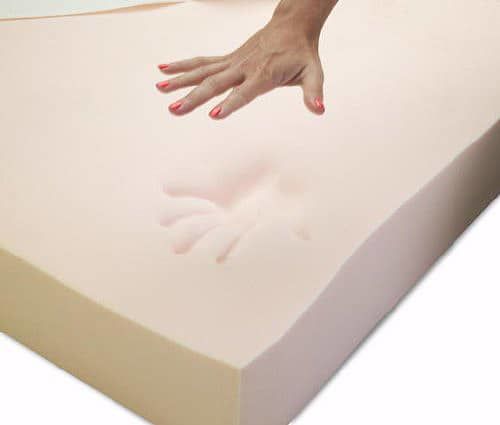
In the 1970’s NASA was working on foam development in order to provide cushioning during space flights. Even though it was released to the public in the 1980’s, the team of scientists went on to further develop it, resulting in the TEMPUR foam used in mattresses today.
The highly secret foam formula that TEMPUR invented has multiple levels of both density and firmness (explained below). What we do know is that it is an open-celled viscoelastic polyurethane foam that is used in layers to create the many mattress lines addressing varying comforts that the company has created.
The TEMPUR-Cloud line consists of a the TEMPUR-ES (extra soft) foam top which is then layered with varying TEMPUR and general foam materials. Both TEMPUR-HD (high density) and standard TEMPUR foams are used to bolster support depending on the model, and to provide varying degrees of mattress firmness and additional air flow.
Density and ILD Measurements
Foam quality is measured by density- a per cubic square foot measurement by weight that is used to describe not just the heft of the foam in question, but also how well it will stand up to the application of weight over time. High density foams last longer since they can better handle the application of weight over time. Lower density foams will begin to compress, and not provide as much support in the long run.
TEMPUR foams weight in at approximately 4.1lb/cu.ft for their TEMPUR-ES (extra soft) foam, which is of decent quality. The TEMPER standard foam weighs around 5.3lb/cu.ft., and the HD (high density) foam comes in at 7.1lb/cu.ft. The general foam used as support is typically of a much lower quality and density occasionally weighing only about 2.0lb/cu.ft.
ILD stands for indentation load deflection, and is a measurement of the softness of the foam. This is not reflected as the quality, but rather the comfort level of the foam, which is how a decent density foam can also be considered extra soft. The lower the ILD rating, the softer the foam, however these measurements can often be misleading because foam ILD can change with heat, humidity, time and inconsistencies with how the measuring device is used.
TEMPUR-Pedic does not easily disclose the measurements of either foam densities or ILD ratings, and many third parties have taken it upon themselves to take these measurements, although the company has, and will continue to, change their measurements as they upgrade and rebuild their mattresses. In general, it is believed that the standard TEMPUR foam used is rated as a 14-15 ILD, and the general poly foam used in base supports falls between 28-36 ILD. ES and HD foams would fall on either side of the standard TEMPER foam.
Warranty and Sleep Trials

The TEMPUR Company was one of the first to offer sleep trials on their mattress claiming that is you didn’t love the product after sleeping on it, you were under no obligation to keep it. Currently they offer a 90 day, hybridized offer that claims pre-approved buyers (dependant on your credit check) may sleep on their mattress for 30 days. They can return the mattress for a full refund, minus shipping costs, during this time. For the following 60 days they may also decide to return the mattress if they have exhausted all alternatives to fix the issues they may have with the company for a full refund, minus the shipping costs.
A 10 year, full replacement limited warranty is also included with all mattress, other than clearance or showroom models, if purchased from the company or an authorized dealer. This covers defects on workmanship and materials, and can be voided is used on an unapproved platform or is stained or have had liquids spilled upon it.
How to Choose the Best TEMPUR-Cloud for You
Keep in mind that the TEMPUR-Cloud line uses the softest foam offered by the company and is layered to provide multiple levels of softness to meet your needs. Sleep position, body weight, and sleep temperature should all be considered before making your choices. Consider the following questions to determine if the Cloud series is the right one for you:
Are you a combination or side sleeper?
Soft sleeping surfaces are not considered a good choice for back or stomach sleepers due to spine curvature. Softer tops do not provide enough support to keep your back in alignment through the night, which may have you waking in pain due to the overcompensation of your muscles to provide the correct posture.
Are you considered of a heavier weight for your body type?
Heavier body types will sink more in a softer surface. You will be supported through the use of the layers provided in the mattress, but it may create sink over time, or even bottom out to the more firm layers beneath and cause pressure points.
Do you often have joint pain or pressure point discomfort?
The TEMPUR-ES foam that is used in the top layer of the mattresses is known to help alleviate issues with pressure points and joint pain associated with too firm a sleeping mattress. Lightweight bodies often get the most comfort from a soft surface.
Do you often get hot at night?
Memory foam, especially extra soft memory foam, has an enveloping sink to it that can create poor air circulation and heat transfer. If you are a hot sleeper, this may not be the choice you prefer as it may cause discomfort.
Is there another person who shares your bed with you?
A soft surface is not ideal for everyone, and if you share a bed with somebody you will both need to determine if this is the best choice for you both. If your partner’s body is drastically different than yours, you may want to look at other options that focus more on a wider range of sleeping preferences.
The TEMPUR-Pedic Cloud Series by Model Type
If you are certain the softer surface of the TEMPUR-Pedic Cloud series is for you, then you definitely want to look closer at the differences that exist within the product line.
Conclusion
As a stomach sleeper, the Cloud Series is probably not my best choice to consider when on the search for the perfect mattress. However I am a fan of soft mattresses to curl up on for reading or movie watching (just not sleeping) and so if I was considering this line of mattresses I would definitely pick the TEMPUR-Pedic Cloud Luxe Breeze.
First off, it is a seriously plush topping made of a decent quality foam which is then supported by a superior layer to keep the mattress from losing it’s shape over time. High density foams do equal higher quality and this mattress does deliver on this end- at least concerning your sleeping surface.
Another major factor at play here is the entirely revamped Breeze technology. I’m not a hot sleeper, but even so, nobody wants to be encased in foam and not have any airflow. Overall this is a decent choice anyone wanting a soft, cool sleeping surface- if you can manage to work it into your budget.
